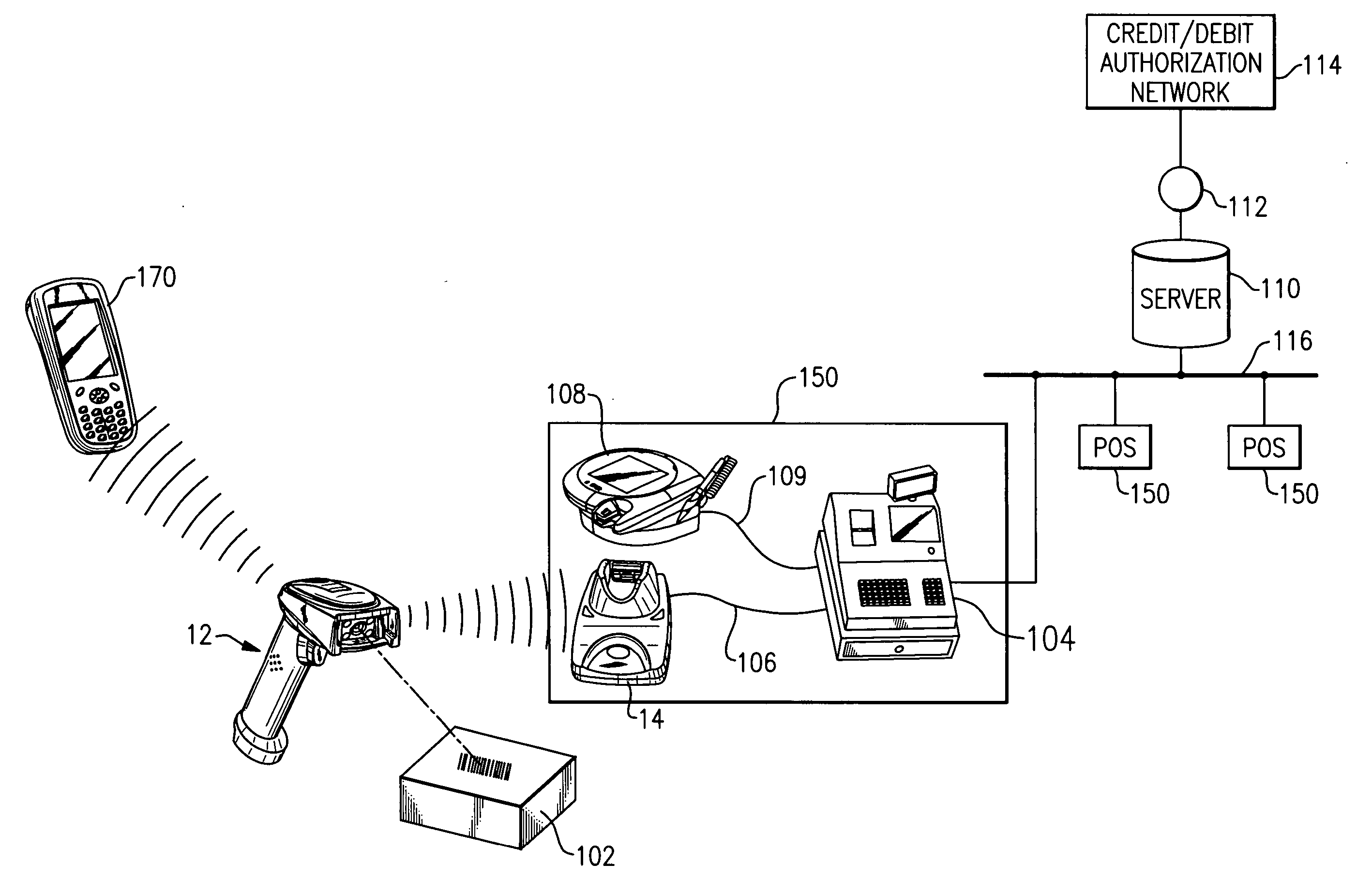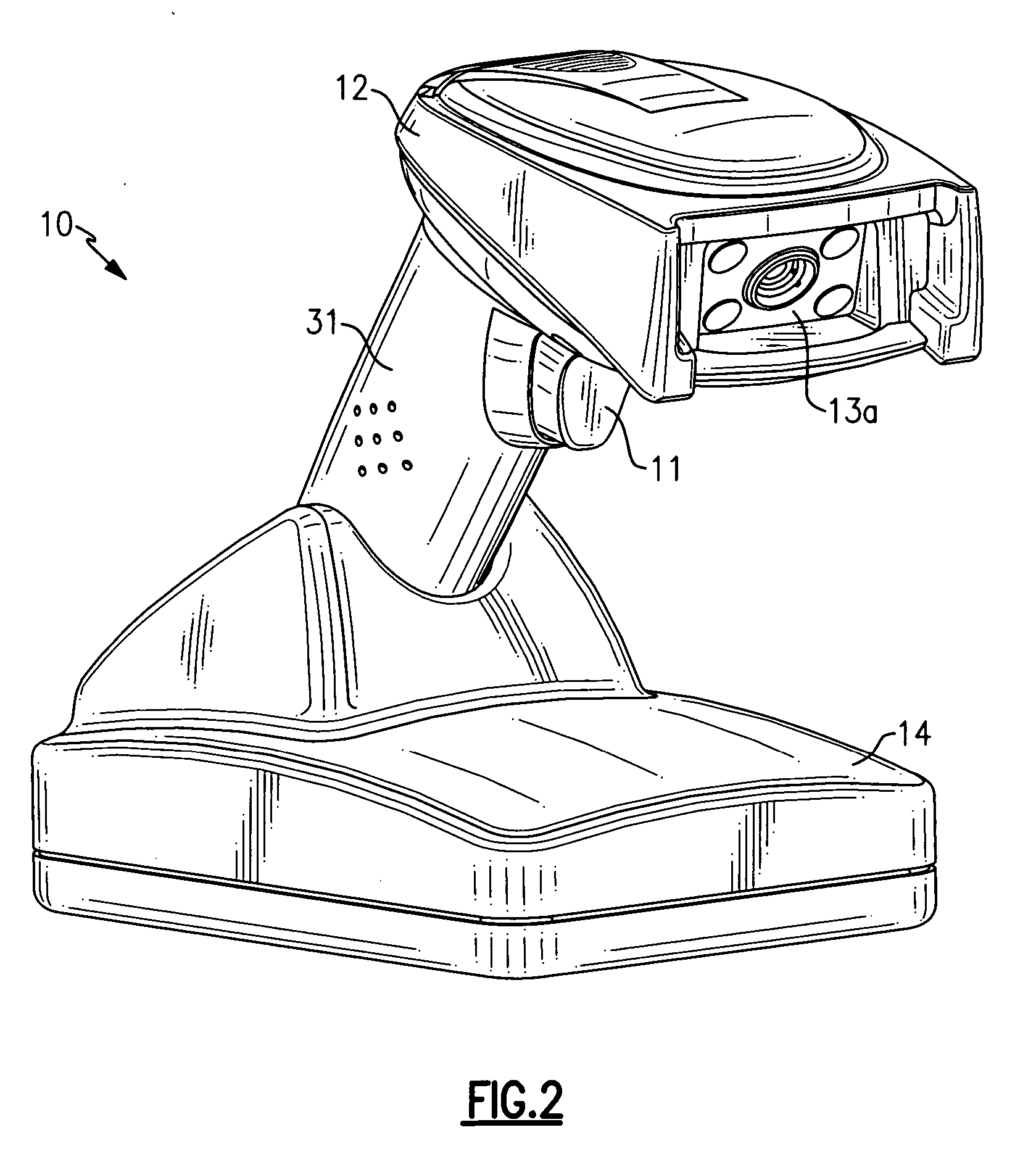Method and system for linking a wireless hand held optical reader with a base unit or other wireless device
a wireless hand-held optical reader and wireless technology, applied in the field of optical devices, can solve the problems of inability to scan large or heavy items, inability to move large and/or heavy objects inherently risky and undesirable, and inability to avoid inadvertent communication, reduce the risk of inadvertent linking, and eliminate unnecessary steps
- Summary
- Abstract
- Description
- Claims
- Application Information
AI Technical Summary
Benefits of technology
Problems solved by technology
Method used
Image
Examples
Embodiment Construction
[0036] Reference will now be made in detail to the present preferred embodiments of the invention, examples of which are illustrated in the accompanying drawings. Whenever possible, the same reference numerals will be used throughout the drawings to refer to the same or like parts for clarity.
[0037] As shown in FIG. 1, the present invention can be used as part of a retail store network 100 at a point of sale (POS) 150. In the illustrative retail store network 100 of FIG. 1, the hand held optical reader 12 scans an item's 102 bar code symbol, decodes the information contained in the bar code symbol, and wirelessly communicates the decoded bar code data associated with that item 102 to the base unit 14 linked with the hand held optical reader 12. The base unit 14 then communicates that bar code data message to a host device such as a cash register 104, which can also be located at the point of sale 150. The base unit 14 communicates this bar code data message to the cash register 104...
PUM
 Login to View More
Login to View More Abstract
Description
Claims
Application Information
 Login to View More
Login to View More - R&D
- Intellectual Property
- Life Sciences
- Materials
- Tech Scout
- Unparalleled Data Quality
- Higher Quality Content
- 60% Fewer Hallucinations
Browse by: Latest US Patents, China's latest patents, Technical Efficacy Thesaurus, Application Domain, Technology Topic, Popular Technical Reports.
© 2025 PatSnap. All rights reserved.Legal|Privacy policy|Modern Slavery Act Transparency Statement|Sitemap|About US| Contact US: help@patsnap.com



